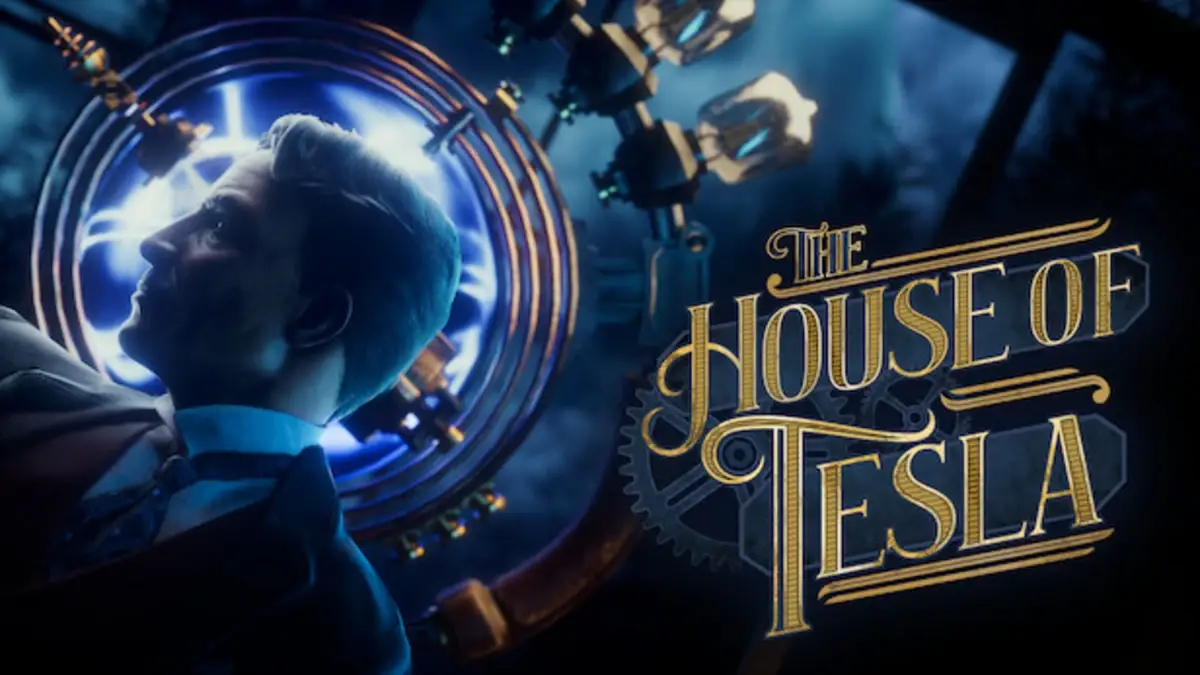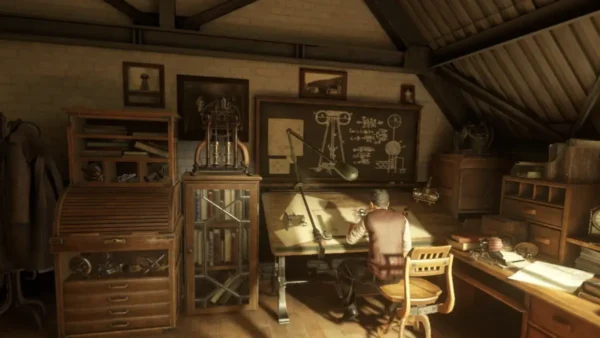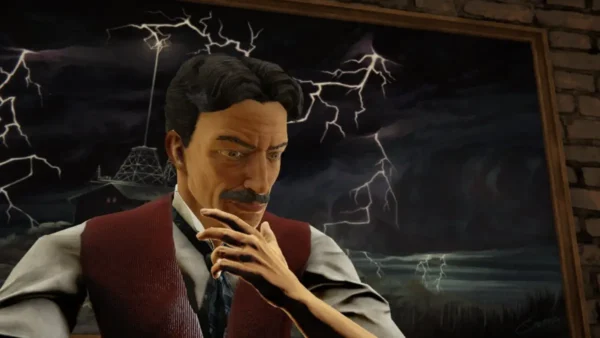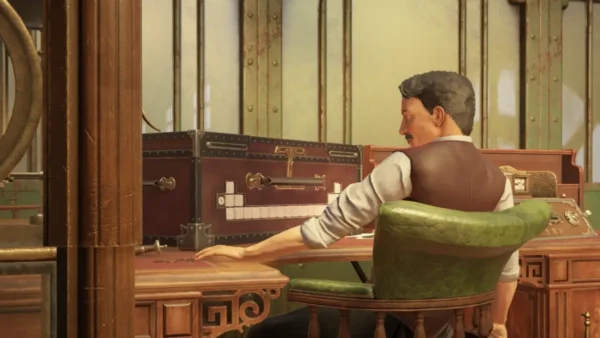The House of Tesla Review begins with a simple truth: this is a puzzle-first adventure built to be touched, twisted, and solved. Across five dense chapters, every drawer, dial, and panel hides another mechanism, and the best moments feel like real tinkering rather than abstract riddles. I finished in about 25 hours on Steam Deck with everything maxed. The instant the Chapter 3 train finally lurched forward, the game’s quiet magic clicked.
Not everything is elegant. Some hints feel vague and a few rotations fight back, but the atmosphere, sound, and hands-on contraptions kept pulling me in. If you want to know where it sings, where it stalls, and whether all those coils and switches are worth your time, this review will take you there.
Puzzle Design
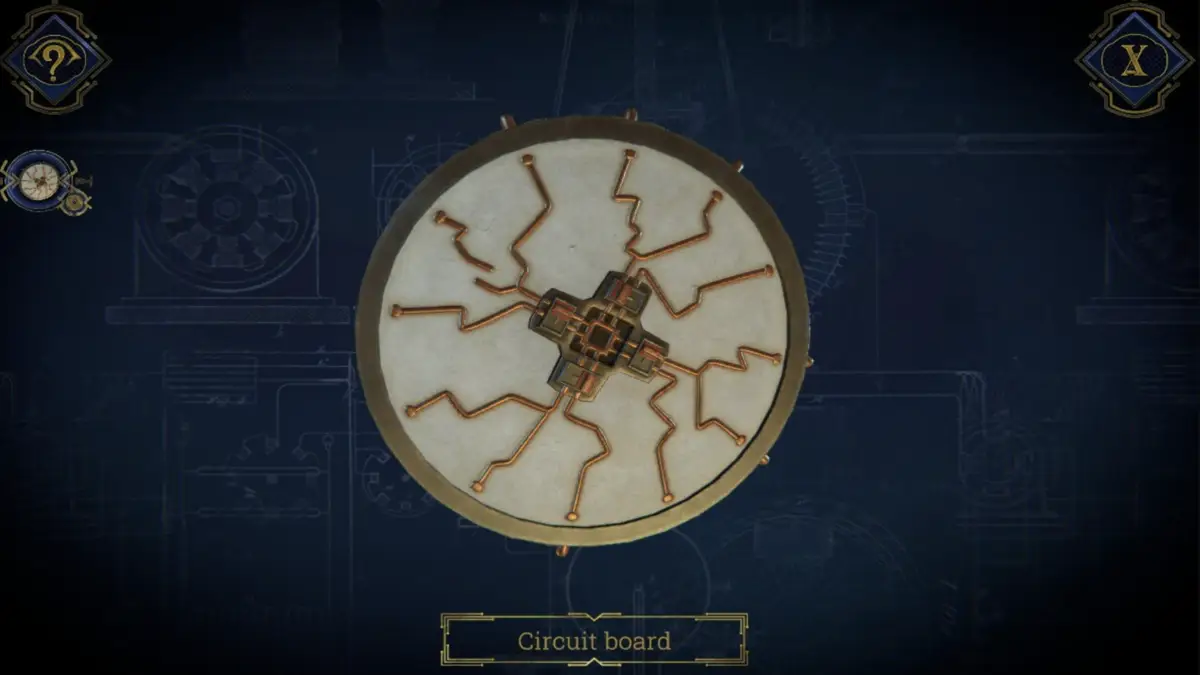
Structure and Density
The headline is density. You rarely solve one lock and move on. You open a device, find fresh problems inside, and realize you just finished step one. The range runs from small dial mechanisms to multi-stage machines that dominate a room. A single chapter can take a few hours. I often split them into multiple sessions because marathoning a full chapter felt like a grind.
Standout Moments
What sells this loop is physicality. One standout sequence has you retrieving a circuit board, rotating an outer ring to align leads, flipping a precise series of switches, and seating the board to power a dormant device. These are not abstract icons. Every step feels like real tinkering, which makes the final click feel earned. Chapter 3’s crane work is another highlight. Moving heavy equipment into position, slotting it where it needs to go, and watching the factory layout respond is quietly satisfying. That chapter builds to the best moment in the game for me: coaxing the train back to life and riding it into the next chapter.
Difficulty and Hints
Difficulty usually feels fair once you spot environmental tells. Some puzzles cross into guesswork. Because I was also drafting walkthroughs, I leaned on hints more than a typical player might, but I still had to think beyond what the game suggested. The two robot arms with five cylinders tested my patience. The hands would not unclench until those cylinders locked just so. Understanding that each cylinder nudged the others like a linked chain was the key. I only saw it after stepping away in Chapter 4 and coming back with a cooler head.
Repetition and Backtracking
Repetition is part of the design. You will backtrack and reuse the same device multiple times within a chapter as new layers unlock. Whether that feels inventive or tedious depends on taste. I liked when a return visit exposed a hidden compartment or a new plane of interaction. Strings of similar alignments can cause fatigue if you hit several in a row. The game balances that repetition with small payoffs you can feel in your hands, which helps the loop stay engaging.
Controls and Performance
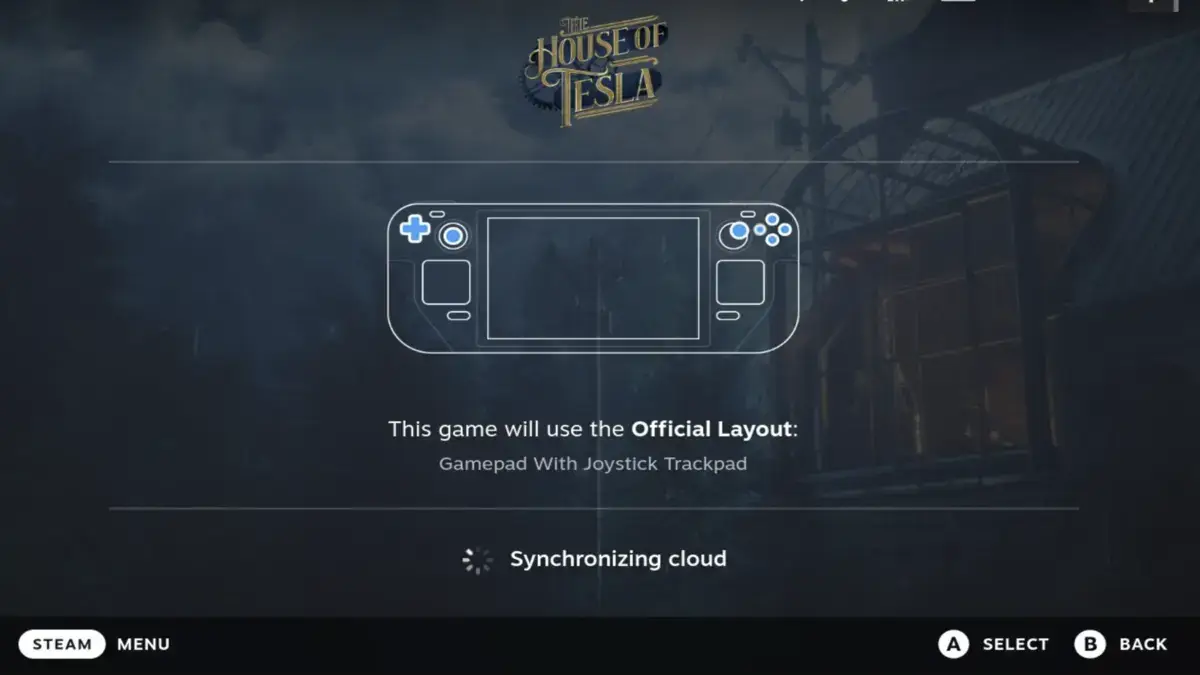
Performance on Steam Deck
I played entirely on Steam Deck at the highest settings, using only buttons and joysticks. Performance was smooth and stable without Steam OS tweaks or in-game compromises. Interactions like grabbing parts, sliding components, and snapping pieces into place feel responsive, which matters in a game built on touch-like manipulation. Battery life held up well. I could nearly finish a full chapter before the 10% battery warning popped, which is impressive for such interaction-heavy spaces.
Rotation Quirk
The one recurring issue is rotation. Spinning certain objects sometimes resets them or fails to register despite clear input. Adjusting angle or trying again fixes it, but the hiccup breaks flow during tougher sequences, especially when a puzzle demands precise alignment. It is not constant, just consistent enough to notice over a long session. Outside of that quirk, I did not run into crashes or stutters. The experience felt polished on Deck.
Traversal
Traversal is point-and-click between nodes rather than free walking. I had no trouble with this approach, and it makes backtracking quick when you are bouncing between related devices. The jumps feel snappy, so motion-sensitive players should take note. The system keeps focus tight on active puzzle spaces and cuts down on aimless wandering.
Presentation
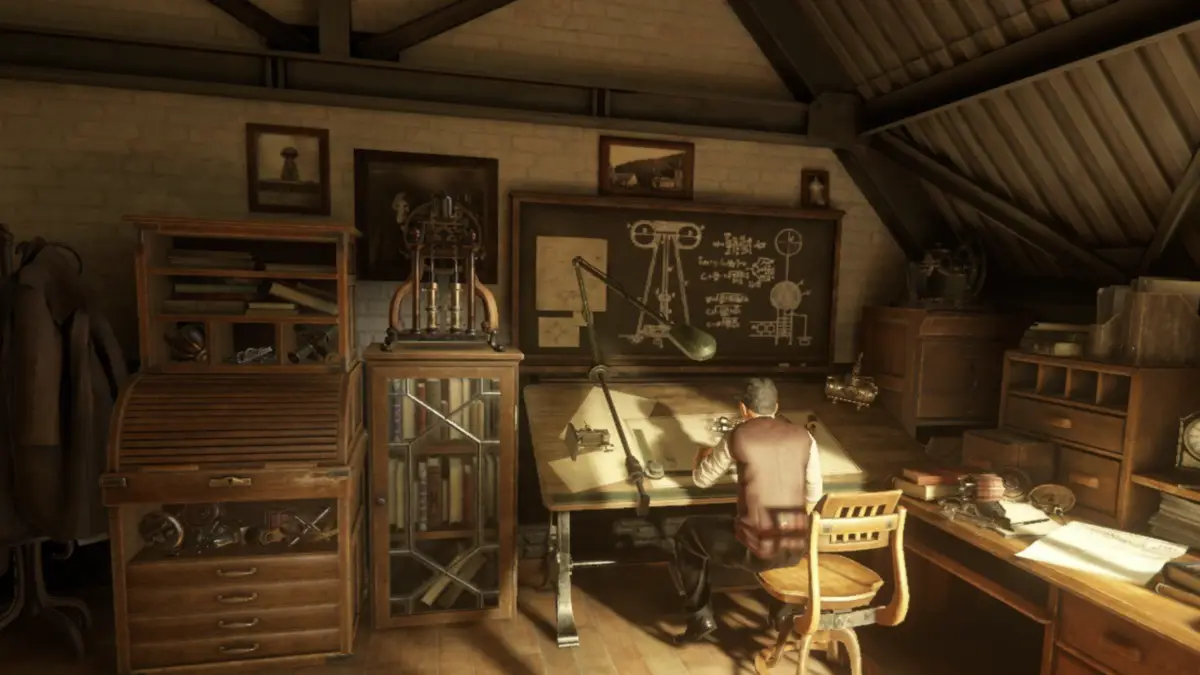
Visuals and Cutscenes
Art direction favors industrial elegance. Brass, glass, gauges, coils, and braided wire create spaces that feel engineered rather than theatrical, with rooms arranged like working labs instead of showpieces. Lighting and color choices keep the focus on mechanisms, so important components read cleanly even when a scene gets busy. Cutscenes trigger from memory objects and play as staged tableaux that frame the machines as much as the people. Characters are static 3D models, and a single voice actor performs the entire cast. It is closer to audiobook delivery than full animation, but the read is clear and keeps the story moving. Also, a few character models look like they just got off a long bender, which unintentionally lightens scenes that are otherwise meticulous. The overall presentation prioritizes legibility and function, which suits a game where your eyes are always hunting for small tells and hidden seams.
Sound and Music
Sound design is the standout. Every latch and gear has a distinct click or thunk that serves as both feedback and flavor. You can often hear whether a move is correct before you see the result. Success and failure sound different, so your ears guide problem solving almost as much as your eyes. The soundtrack stays mostly chill while you are puzzling, which creates a calm, focused space that makes long sessions comfortable. During cutscenes it swells and sharpens to match the mood, adding urgency or melancholy without drowning the moment. The mix leaves room for the mechanical soundscape, so the score supports your concentration instead of competing with it.
Story and Stakes
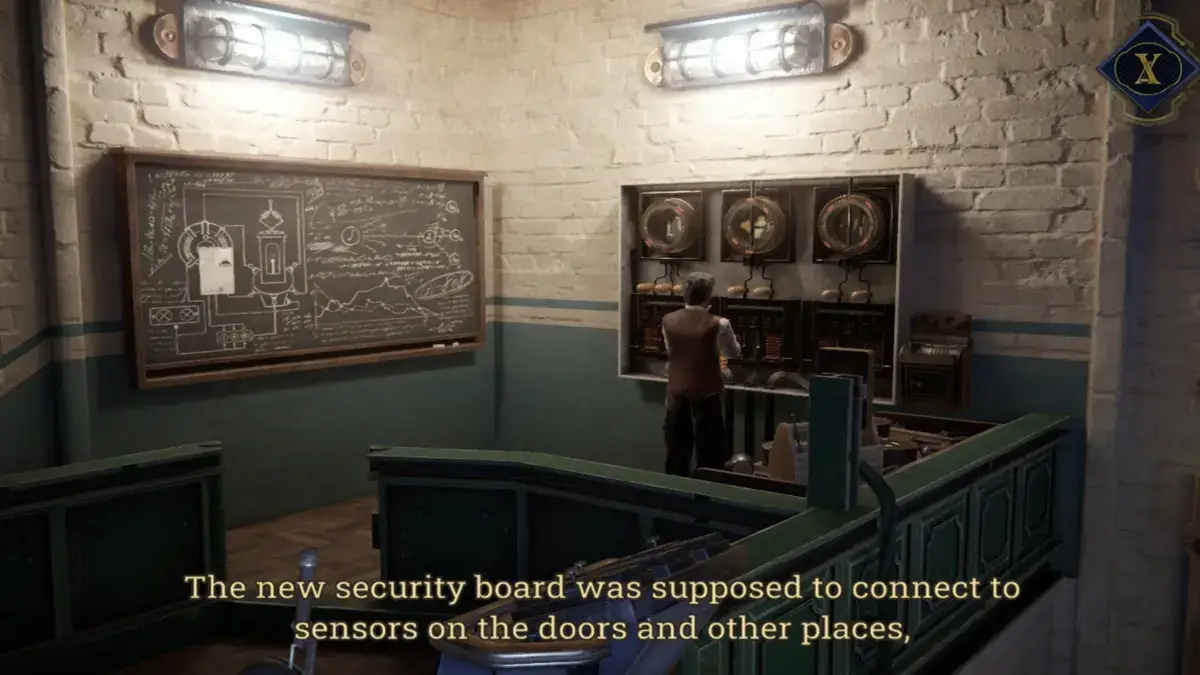
Pressure and People
You are assembling a what-if version of Tesla’s breakthroughs, funding struggles, and relationships, and you do it by working through the same problems he might have faced. Memory vignettes, letters, and lab notes sketch the pressures around him, while figures like J. P. Morgan step in to frame the realities of money, deadlines, and belief. The result is not a history lecture. It is a steady pressure that sits behind every locked panel and stubborn mechanism.
Learning Through the Work
What makes the story land is how you learn about Tesla through his machines. Solving a circuit is not just flipping a switch. You test resonance, route current, and balance polarity. You feel how a design choice trades elegance for stability or cost. Each device quietly explains why he did what he did. When a system finally hums to life, you are not just advancing a quest. You are proving out an idea, and the success reads as understanding rather than brute-force progress.
Why It Sticks
The side characters, which I will not spoil, add agency and friction that underline how hard it was to keep momentum when resources were thin. Their presence turns even simple victories into acts of persistence. The narrative mostly stays out of the way and lets spaces and machines carry the drama, which fits a game that wants you nose-to-nose with panels and parts. By the credits, you do not just know that Tesla built wonders. You have a feel for how those wonders worked, what they cost to pursue, and why the next experiment mattered.
Final Take – Is The House of Tesla Worth Playing?

The House of Tesla is a dense, tactile puzzle adventure that builds satisfaction through physical interaction and a cohesive sense of place. Audio feedback is excellent, the historical framing gives it character, and set pieces like the Chapter 3 train sequence create genuine peaks. You will hit a few vague solutions, you will repeat certain actions, and you may wrestle with spinning objects on Steam Deck. The highs outweigh the lows, and the result is an easy recommendation for puzzle fans who enjoy rolling up their sleeves and turning machinery into momentum.

